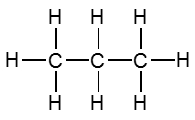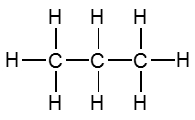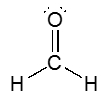When talking about the types of intermolecular forces, realize that there are 4 types of them, and they are the forces that attract molecules together. Now here we're going to say the polarity of compounds plays a big role in the type of force present. So let's go through this. We have our types of forces, then we have those they exist between, we talk about their strengths, and then we give an example. The first type we have is ion-dipole. This is the force that exists between ions, so positive and negative ions, and polar compounds. They are the strongest of the intermolecular forces. So anytime you see an ionic compound, you can assume that water is the solvent that it can be dissolved in. Usually, you'll see an ionic compound with water, but let's say you see only an ionic compound, and they ask what's the intermolecular force, just assume it's dissolved in water. When we dissolve sodium chloride in water, we have ions Na+ (aqueous) and Cl- (aqueous). Remember, aqueous just means that the ion is submerged in water. And what's actually happening is that we have our sodium ion here, which is positive, the oxygen end of water, which is partially negative, would be attracted to it because opposite charges attract. The attractive force would be illustrated by this dotted line. Cl- is negative, so it would be the hydrogen end of water that would be attracted to it because water would be partially positive here, and the attractive force between chlorine and the hydrogen will be symbolized by that dotted line. So this is what we mean when we say an ion is aqueous in solution. It's water molecules surrounding it, basically dissolving it. We're gonna say solvating it. These are terms they usually use. So ion dipole is the strongest force. It's indicative of an ionic compound being dissolved within a polar substance, such as water.
The next one is hydrogen bonding. This is when we have compounds containing hydrogen directly connected to F, O, N (fluorine, oxygen, and nitrogen). So here, this one is the second strongest after ion-dipole. Here we have water, and we have NH4+. NH4+ is a polyatomic ion, the ammonium ion. We could show water molecules being attracted to one another, and the dotted lines show that attraction, or we could show NH4+ molecules being attracted to the water, so hydrogen here is partially positive. Oxygen and its lone pair would be attracted to one of these hydrogens. So it's those dotted lines between these molecules that represent the hydrogen bonding. But hydrogen bonding itself can't exist unless a molecule is showing an attractive force between hydrogen, fluorine, oxygen, or nitrogen.
The next one is dipole-dipole. Now, before we talk about dipole-dipole, realize that hydrogen bonding is a special type of dipole-dipole. It's also dipole-dipole itself is just hydrogen bonding type of dipole-dipole. This is when you have two polar covalent compounds. This one here is the third strongest of all the intermolecular forces. So here we have HCl, which is polar, and SO2, which is polar. And here we could show the attraction between them. So remember, chlorine has its lone pairs. It's more electronegative than hydrogen so it would be partially negative. Hydrogen would be partially positive. Within SO2, you could show the sulfur with its lone pairs, oxygen with its lone pairs. Oxygen is more electronegative, so it'd be partially negative. It would form an attractive connection to the hydrogen of HCl. That dotted line would be the dipole-dipole interaction between these two molecules, and it could only happen because both molecules are polar.
Finally, we have the last and the weakest intermolecular force, which is called London dispersion, and sometimes it's called dispersion forces, and sometimes it's called van der Waals forces. This is the dominant force between two nonpolar covalent compounds. Here we have CH4, which is a hydrocarbon, and here we have CCl4, which is nonpolar as well. Now, if you don't know this, make sure you go back and take a look at my videos on molecular polarity, where we show how to draw these structures and explain why exactly they're nonpolar. So here, we have CH4 and here we have CCl4. Now both of these are nonpolar, so why exactly would they all of a sudden be attracted to one another? Well, that's because when molecules come too close together, there is an instance because of their close proximity to one another that they develop a slight polarity. That slight polarity between each other causes them to become attracted to one another. So we'd say that there is some type of attraction between this molecule and this molecule because of that instance, that moment where one being too close to another makes them both slightly polar for a moment. Overall, they're still nonpolar though. We're just talking about that split moment. Now these are our rankings of the intermolecular forces and what's important to know here is that the London dispersion forces, although they're the weakest, they are actually present in all types of compounds. So water, which has its main intermolecular forces being hydrogen bonding, actually has some London dispersion forces in it as well. This ionic compound being dissolved in water, its major force is ion-dipole, but it also has a little bit of London dispersion forces in it as well. So just realize that although dispersion forces are the weakest, they are present in all compounds. So they serve an important purpose.





